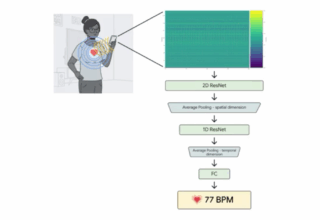
Sometimes it seems that for every advancement in cyber security a new vulnerability reveals itself. It can be difficult to secure your information online; both as a web user and as a website administrator, but there are steps you can take to secure your data and prevent the leak or compromise of financial and other sensitive information. Read on to learn the steps to cyber safety and see if there’s anything you should be doing differently on the web.
Securing Passwords
The first step you should take in securing your identity and financial information is to maintain strong passwords. There are several online tools such as PasswordMeter that you can use to measure the strength of your passwords.
As a website owner there is some onus on you to maintain safe passwords for users on your website. This is accomplished from the backend by requiring users to use complex passwords involving numbers, letters, and symbols. It is also helpful to keep secure passwords on your password databases and restrict access to the backend files of your website with FTP access restrictions and other security configurations.
Captcha for Cyber Safety
One of the best ways to ensure your safety on the web is to rely on websites that use Captcha. This gate-keeping security tool might be frustrating at times but is crucial in preventing bots and scripts from using brute-force attacks to gain access to a website.
If you’re a WordPress website owner you can easily install Captcha on your own website or blog using a third-party Captcha plugin. This will allow your users to secure their accounts and improve the overall cyber security profile of your web hosting account.
SSL and Secure Connections
Secure Sockets Layer certification is perhaps the single most important item a website can obtain to prove they are trustworthy; especially when it comes to financial information and credit card transactions. SSL refers to a protocol used to encrypt data as it is being transmitted between a server and a user’s browser, making it difficult if not impossible to intercept by others on the user’s local network or elsewhere in the line of transmission.
One variant of this vulnerability that SSL protects against is called the Man-in-the-Middle attack and has affected web users for decades due to the slow implementation of universal SSL.
You can usually obtain a SSL certificate from your web hosting provider or domain registrar. There are even free ways to get SSL for your website with systems like Let’s Encrypt but make sure they are supported by your host before signing up.
From an end-user standpoint, the HTTPS Everywhere plugin for Chrome and Firefox can help make sure you’re connecting through SSL. Millions of users have downloaded and installed this utility so end-users are generally pretty quick to notice if your website isn’t using SSL.
In fact, some browsers are not displaying warnings like Chrome’s somewhat-dramatic “This site is not secure” message on all websites that don’t utilize SSL so it’s a good idea to go ahead and sign up for SSL before leaving a bad impression on your site’s visitors.
Updating Your Websites for Improved Cyber Safety
If you’re running a CMS-based website then you’ll want to keep every plugin you’re using, along with the CMS itself, entirely up to date. Content Management Systems like WordPress, Joomla, and Drupal tend to release security patches and less-vulnerable core versions of their software every 2 or 3 months.
Check your administrator dashboard to make sure your CMS is up to date and locate the list of active plugins to see if any plugins have failed to update to their latest versions. If you’re one of the millions of people running a WordPress website you can simply enable automatic plugin updates to keep your site secure.
Keep in mind some free plugins require the purchase of a software license to upgrade and may not be available to update to premium versions through the automated system.
Making Backups of your Data
Lastly, there’s no way tototally ensure your website or account data won’t eventually be comprised or at-risk so it’s imperative you create a backup of anything you put on the web. Website owners can backup their websites using a variety of methods including manual backups and automated backups through point-and-click plugins.
If your web host doesn’t offer an easy backup solution you’ll likely want to install a CMS-specific tool for making copies of your important files. WordPress users have given good reviews to BackWPup while Joomla users seem like to Akeeba for copying files.
Keeping your passwords secure by using a mixture of symbols, numbers, and letters can go a long way in protecting your online accounts. Websites owners have a responsibility to protect password databases with secure protocols and passwords and to use reliable, secure website hosting. Install SSL on your website and look for SSL certifications when browsing the web to ensure your data isn’t being intercepted.
By following these basic steps and creating backups of your files you’ll be able to rest easy knowing you’re protected against and prepared for any potential cyber safety breaches.


















